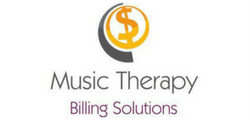It struck me recently that I am now two years into a PhD program, yet have spent relatively little time actually blogging about my program and what I’m working on! This is a change for me as my first several years of blogging were centered around sharing my experiences and what I was learning.
But it’s been different since going back to school . . . and I’m not entirely sure why. Perhaps I felt I wasn’t ready to talk about my developing research ideas. Perhaps it was a lack of confidence. This PhD process has been (and will continue to be) a huge growth experience for me. My ideas and thoughts have shifted, even from 6 months ago, and will likely continue shifting as I keep reading, writing, and experiencing.
However, even with all these developmental shifts, the core idea of what I’m studying has remained constant. It’s a little seed of an idea that’s grounded in clinical experience.
This is not an uncommon occurrence. There is a feedback loop between clinical experience and research. What happens during a session generates questions about an observation or experience. These questions are then systematically studied and explored. The findings from the exploration lead to changes in clinical practice (however small) and a deeper understanding of the work we do . . . and the loop begins again.
The seed of my research inspiration is grounded in my clinical experience. As a young music therapist, my first contract had me working at a residential treatment center in Colorado with children aged 3-12 who had a history of severe abuse and neglect (which I would now call “complex trauma”). I had no experience in this area, so spent the next several years reading, attending workshops, and talking to my colleagues in an attempt to marry my understanding of neuroscience and music therapy with this mental health population.
I learned terms like regulation and dysregulation. I was re-introduced to attachment theory and the stress response. I read Bruce Perry and Allan Schore so that I could understand more how trauma effected the developing brain. I read several chapters in The Cognitive Neuroscience of Music in an attempt to understand how the music I was using was helping these children.
Because it was. I didn’t really know how or why—okay, I had a superficial understanding but not a deep one—yet the work I was doing was making a difference. And it wasn’t necessarily due to an explicit strategy or intervention I was using. It seemed more like just being involved in music therapy opened these children up, priming them to remember and process their trauma. Music was like this direct safety link that calmed their overactive reptilian brain long enough for them to connect, process, and understand.
This, then, is my seed of inspiration, the driving force behind the past 2 years of my life and my immediate, if not long-term, future. I am attempting to understanding how music can work at an implicit, subconscious level to influence emotion regulation development in children.
It’s a pretty fun ride and I look forward to sharing more with you as I continue my journey in academia.



 orcid.org/0000-0001-8665-1493
orcid.org/0000-0001-8665-1493






{ 2 comments… read them below or add one }
I was suggested this web site by my cousin. I’m not sure whether this post is written by
him as nobody else know such detailed about my
trouble. You’re wonderful! Thanks!
Thanks for your nice post .really this article is very helpful for us Please keep it your writing .
If anyone want to read this kinds of post or topic Please visit here for best info .
Thanks
You must log in to post a comment.